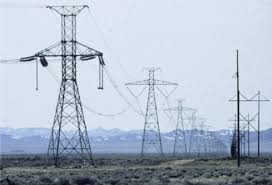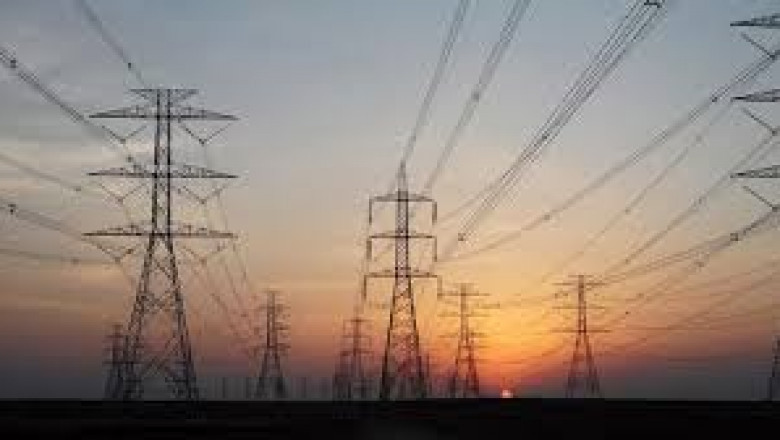dilihat
HVDC transmission system market are increasingly being adopted as the backbone of modern power transmission networks. They are known for their ability to transmit electricity over long distances with minimal losses, integrate renewable energy sources, and support cross-border power trading. However, despite their transformative potential, several hindrances are impeding the growth and large-scale deployment of HVDC systems across various global markets. These barriers are not limited to technological issues but extend into economic, regulatory, environmental, and political realms.

High Capital Investment Requirements
One of the most significant hindrances facing the HVDC transmission market is the high capital cost associated with its implementation. HVDC systems require specialized equipment like converter stations, advanced control mechanisms, and high-grade transmission cables. These components are expensive to procure and install, making the initial investment substantially higher than conventional AC transmission systems. While the operational efficiency of HVDC systems results in long-term savings, the high upfront cost often becomes a deterrent, particularly for developing countries or financially constrained utilities.
Extended Project Development Timelines
The time required to plan, design, secure approvals, and construct HVDC transmission lines is another major hindrance. Unlike traditional transmission systems, HVDC infrastructure projects are complex and involve several phases of feasibility studies, environmental assessments, land acquisition, and engineering. These processes often lead to long project lifecycles, during which market conditions, government priorities, or technological needs may shift. This delay in implementation often discourages stakeholders from pursuing HVDC projects, especially in fast-growing or politically volatile regions.
Regulatory and Policy Barriers
The absence of cohesive and consistent regulatory frameworks remains a persistent challenge for the HVDC market. Regulatory environments differ from country to country, and even within regions, creating difficulties in project coordination and standard compliance. Moreover, the permitting process is often prolonged due to conflicting interests among governmental bodies, lack of clear guidelines, and legal disputes over land use or environmental impact. These policy-related hindrances not only increase costs but also prolong commissioning times and reduce investor confidence.
Challenges in Grid Integration
Integrating HVDC technology into predominantly AC-based power grids presents technical difficulties that require careful planning and execution. Converter stations are necessary to transition power between AC and DC systems, but their installation requires significant technical expertise and capital. Moreover, compatibility issues can arise in terms of grid frequency, voltage control, fault protection, and power quality. These integration challenges complicate deployment and make utilities hesitant to adopt HVDC solutions unless absolutely necessary.
Supply Chain Vulnerabilities and Material Dependencies
The HVDC market is highly dependent on the availability of specific raw materials and advanced components, such as high-voltage semiconductors, insulation materials, and control systems. Many of these components are manufactured by a limited number of suppliers concentrated in specific geographies. Disruptions in the global supply chain—caused by pandemics, geopolitical conflicts, or trade restrictions—can delay equipment procurement and lead to project slowdowns. Additionally, the reliance on imported materials and technologies adds vulnerability to national energy security strategies.
Environmental and Social Concerns
HVDC infrastructure projects, particularly overhead lines, often face resistance from communities and environmental groups due to concerns about land use, visual impact, and ecological disruption. Large-scale projects may require traversing protected or densely populated areas, triggering opposition and legal challenges. While underground or submarine HVDC systems are alternatives, they are significantly more expensive and complex to deploy. This opposition can lead to delayed approvals, higher project costs, and, in some cases, complete cancellation of planned infrastructure.
Lack of Skilled Human Resources
The technical complexity of HVDC systems demands a highly skilled workforce proficient in power electronics, system engineering, control software, and project management. However, many regions, especially in emerging markets, lack adequate training programs and educational infrastructure to build such a workforce. The shortage of trained professionals hinders project execution and increases reliance on foreign consultants and engineers, which inflates costs and limits domestic capacity building.
Cybersecurity and System Vulnerability
As HVDC transmission becomes more digitally integrated with smart grids and IoT systems, it becomes vulnerable to cybersecurity threats. The reliance on software-driven control systems and data communications increases the risk of cyberattacks that could disrupt transmission or damage infrastructure. Developing secure, resilient HVDC networks requires robust cybersecurity protocols, frequent audits, and updated software systems, which add layers of complexity and cost to project implementation.
Geopolitical and Cross-Border Tensions
HVDC projects that aim to connect grids across international borders are particularly susceptible to geopolitical risks. Diplomatic tensions, policy misalignment, and trade barriers can halt cross-border collaborations and disrupt power-sharing agreements. Such uncertainties deter investors and complicate the logistics of developing joint infrastructure projects. In some cases, national security concerns also prevent international companies from participating in strategic HVDC projects, narrowing the field of potential technology providers.
Conclusion
The HVDC transmission system market offers significant promise for enhancing energy efficiency, integrating renewable sources, and strengthening global electricity infrastructure. However, its growth is currently constrained by a variety of hindrances, including high capital costs, regulatory complexity, technical challenges, supply chain vulnerabilities, and political instability. Addressing these barriers will require a concerted effort from governments, industry stakeholders, educational institutions, and international organizations. By developing supportive policies, investing in workforce development, and promoting standardized technologies, the global community can unlock the full potential of HVDC systems and accelerate the transition to a more sustainable and reliable energy future.






















Comments
0 comment